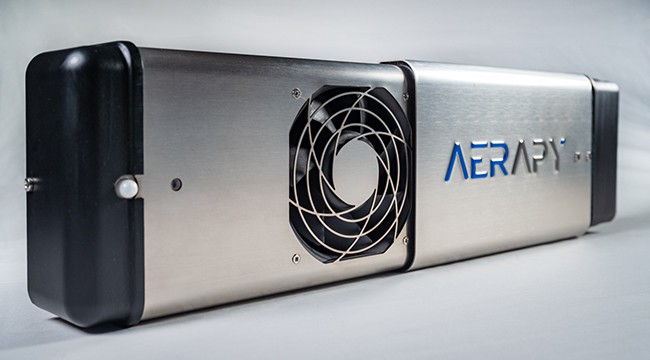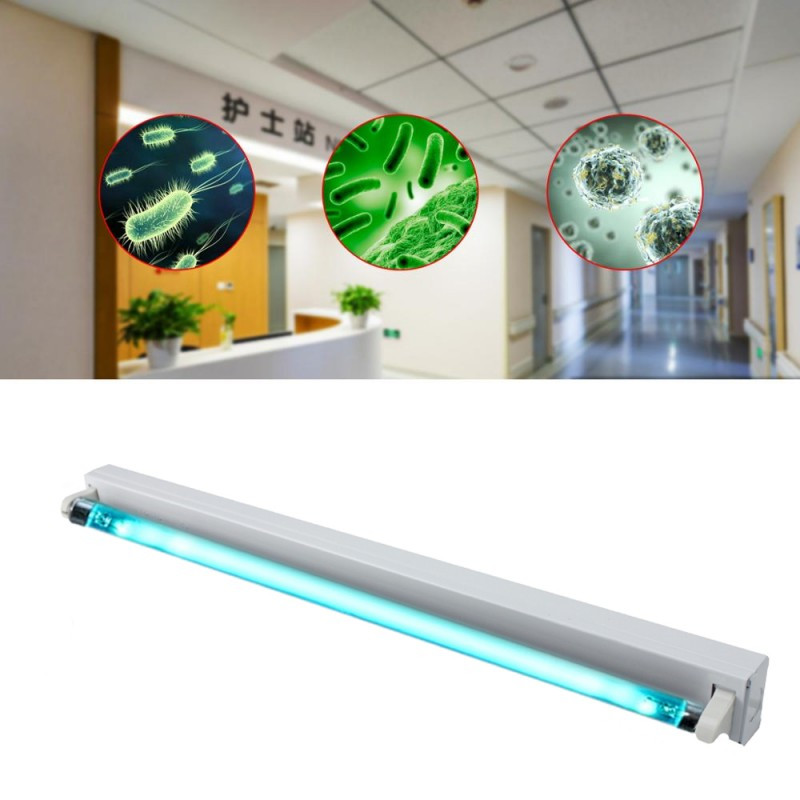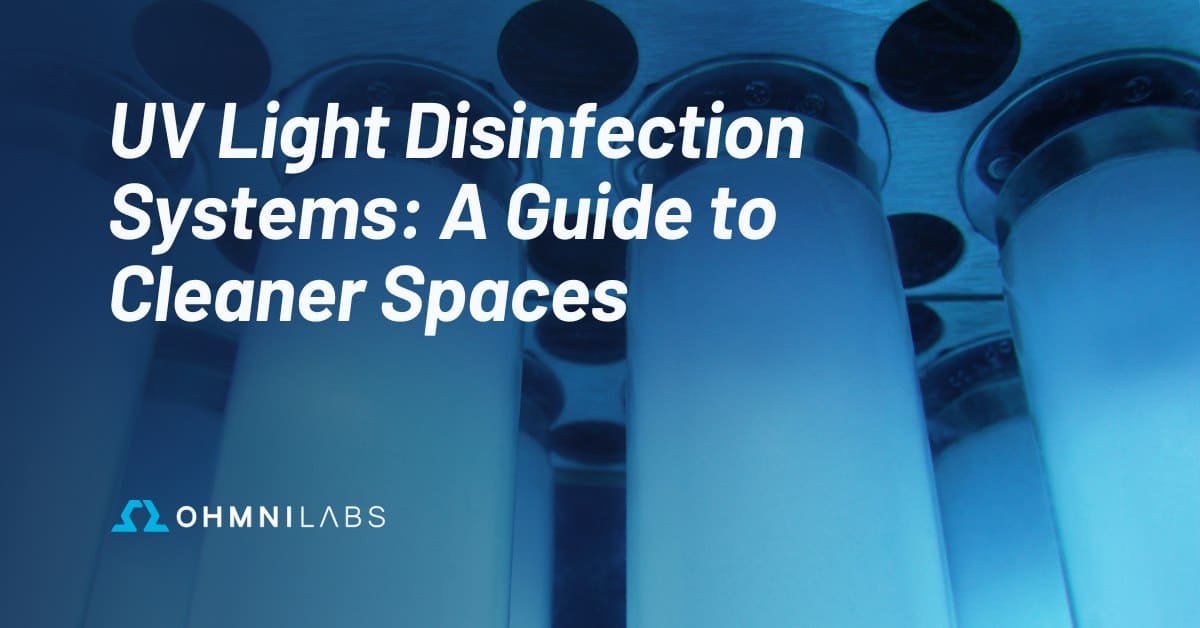Discover the Conveniences of UV Surface Disinfection: Efficient and Eco-Friendly Sanitation
Wiki Article
Harnessing the Prospective of UV Sanitation: Shielding Wellness and Health
As the globe faces the ongoing pandemic and the constant danger of infectious diseases, the relevance of maintaining wellness and health has never ever been a lot more evident. In this context, using the potential of UV sanitation emerges as an appealing solution. UV disinfection, a technology commonly used in different markets, has confirmed efficient in removing hazardous microorganisms. Nonetheless, there is a lot more to check out behind the scientific research of UV sanitation and its applications. From understanding the mechanisms at play to implementing this innovation in our daily lives, this discussion aims to lose light on the capacity of UV disinfection and its duty in securing our health and hygiene.Understanding UV Disinfection
UV disinfection is an extremely efficient and widely utilized technique for eliminating harmful virus and guaranteeing wellness and hygiene. This strategy utilizes ultraviolet (UV) light to suspend bacteria by harming their DNA and stopping them from recreating. UV sanitation is specifically effective against germs, viruses, and other microorganisms that can cause infections and diseases.The concept behind UV sanitation is simple yet powerful. When UV light is emitted at a particular wavelength, it permeates the bacterium's cell wall and disrupts its hereditary product. This process, called photodissociation, results in the formation of thymine dimers, which avoid the microorganism from replicating and rendering it harmless. UV sanitation can be used in various setups, consisting of water therapy plants, medical care centers, food handling industries, and air purification systems.
One of the benefits of UV sanitation is its ability to properly and successfully eliminate a vast array of microorganisms without the requirement for chemicals or ingredients. Unlike various other disinfection approaches, such as chlorine or ozone, UV sanitation does not present damaging by-products or chemical residues into the setting. In addition, UV sanitation is a non-contact procedure, which implies that it does not need physical call with the bacteria, minimizing the threat of cross-contamination.

The Science Behind UV Disinfection
The effectiveness of UV disinfection hinges on its capability to interfere with the genetic material of bacteria, rendering them unable to reproduce and therefore eliminating their dangerous capacity. UV, or ultraviolet, radiation is a form of electromagnetic radiation with wavelengths much shorter than noticeable light. It is categorized into 3 types: UV-C, uv-a, and uv-b. UV-C radiation, specifically, has the quickest wavelength and the highest power. This high-energy UV-C radiation is most efficient in disinfection applications since it can permeate the cell walls of microorganisms and harm their DNA or RNA.When microorganisms are exposed to UV-C radiation, the power is taken in by their genetic product, causing bonds to break and forming chemical responses that disrupt their capability to recreate. This stops the microbes from spreading out and reproducing infection. UV disinfection is especially efficient versus infections, germs, and fungi, consisting of common virus such as Escherichia coli, Salmonella, and Flu.
The science behind UV disinfection is sustained by extensive study and researches. It has been revealed that direct exposure to a sufficient dose of UV-C radiation can achieve a high level of disinfection, frequently surpassing 99.9% efficacy in killing microbes. It is important to note that the effectiveness of UV disinfection depends on various variables, including the strength of UV-C radiation, direct exposure time, range from the UV resource, and the susceptibility of the microorganism to UV radiation (uv surface disinfection).
Applications of UV Disinfection
Offered the substantial research and efficacy of UV disinfection in interfering with the genetic material of microorganisms, it is essential to discover the numerous functional applications of this modern technology. UV sanitation has actually confirmed to be an important tool in a wide variety of sectors where preserving a risk-free and clean setting is crucial.One significant application of UV sanitation is in healthcare setups. UV light can be used to decontaminate surfaces, tools, and also the air in hospitals and clinical facilities. This helps to decrease the threat of healthcare-associated infections and guarantees a much safer atmosphere for clients and health care employees.
An additional vital application remains in the food and beverage sector. UV disinfection is utilized to deal with water and get rid of dangerous microorganisms, such as E. coli and Salmonella, from the production procedure. uv surface disinfection. This makes sure the safety and top quality of the products we eat
UV sanitation is also widely used in water treatment plants and wastewater treatment facilities. It is an efficient technique for destroying unsafe bacteria, viruses, and parasites that can be present in water sources. This assists to provide tidy and risk-free drinking water to areas and shield the setting from contamination.
In addition, UV disinfection is used in the pharmaceutical sector to sterilize devices and keep the integrity of items. It is additionally utilized in labs and research facilities to avoid contamination and guarantee exact outcomes.
Benefits of UV Disinfection Technology
One noteworthy advantage of employing UV sanitation innovation is its capacity to properly get rid of bacteria without the use of extreme chemicals. This is particularly useful in different setups, such as health care centers, water treatment plants, and food handling sectors, where the existence of harmful microorganisms presents a significant threat to public health and wellness and security.
Unlike conventional disinfection techniques that rely upon chemicals like chlorine or ozone, UV disinfection modern technology uses ultraviolet light to target and destroy the DNA of microbes, effectively neutralizing their capability to recreate and trigger infections. This procedure not just eliminates the requirement for potentially damaging chemicals but also decreases the danger of chemical residue or byproducts remaining in the treated atmosphere.

Furthermore, UV disinfection modern technology is environmentally pleasant. As it does not count on making use of chemicals, it eliminates the demand for their disposal, transportation, and manufacturing, decreasing the general carbon impact related to disinfection processes. Additionally, UV disinfection systems have a longer life-span compared to chemical-based approaches, resulting in less constant replacement and more minimizing waste.
Carrying Out UV Sanitation in Every Day Life
To effectively apply UV disinfection in everyday life, organizations and individuals can incorporate mobile UV disinfecting gadgets right into their health routines and cleaning methods. These devices are made to discharge ultraviolet light, which has actually been confirmed to eliminate or suspend Discover More a wide variety of bacteria, consisting of viruses, microorganisms, and fungi. By utilizing portable UV sanitizing devices, people can sanitize typically touched surfaces and items, such as cellular phone, laptops, tricks, and doorknobs, decreasing the threat of spreading out bacteria and infections.Along with integrating mobile UV sanitizing gadgets, it is essential to follow correct standards and referrals for efficient UV sanitation. This consists of making certain that the tool is utilized appropriately and for the recommended period to attain optimal sanitation outcomes. It is also critical to focus on precaution, such as putting on safety glasses and preventing straight exposure of the UV light to the skin.

Additionally, companies can apply UV sanitation innovation in different settings to boost hygiene methods. Hospitals and healthcare facilities can use UV disinfection robotics to sterilize person areas, operating cinemas, and other high-touch locations. Food handling industries can integrate UV disinfection systems right into their production lines to boost food security and avoid contamination.
Verdict
In conclusion, UV sanitation technology holds wonderful prospective in safeguarding health and health. With its various advantages, UV sanitation is a beneficial tool for keeping a healthy and tidy environment.Unlike various other sanitation methods, such as chlorine or ozone, UV disinfection does not present damaging by-products or chemical deposits right into the atmosphere. It is crucial to note that the performance of UV disinfection depends on different elements, including the intensity of UV-C radiation, direct exposure time, distance from the UV resource, and the susceptibility of the microbe to UV radiation.
An Look At This additional benefit of UV sanitation technology is its ability to supply fast and continual sanitation. Unlike guidebook cleaning approaches, which can be lengthy and require substantial labor, UV disinfection systems can be automated and operate constantly, making certain consistent sanitation without human treatment.To properly implement UV sanitation in daily life, people and organizations can include portable UV learn this here now sanitizing gadgets into their hygiene regimens and cleaning practices.
Report this wiki page